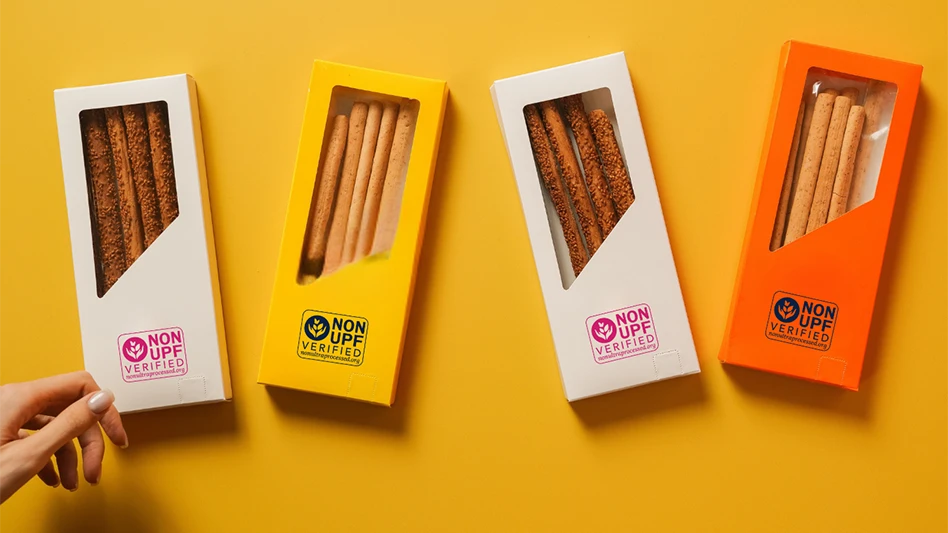ROCKVILLE, Md. - Standards for omega-3-rich krill oil and natural, low-calorie stevia sweeteners are among the latest proposed revisions to the Food Chemicals Codex (FCC), an internationall recognized compendium of food ingredient quality standards published by the U.S. Pharmacopeial Convention.
Manufacturers and other parties are encouraged to comment on these proposals, which are contained in the most recent FCC Forum.
"Ensuring the quality of the food ingredients that make up so much of our global food supply is not only part of responsible business practice, but is critical to the health of consumers," said V. Srini Srinivasan, Ph.D., executive vice president, global science and standards for USP. "Public standards defining the identity, quality and purity of ingredients incorporated into finished products can be an important resource for manufacturers as they source ingredients from suppliers around the world, offering some assurance that they are receiving the ingredients they expect by providing public specifications to which they can be compared."
Some of the proposals include:
- Krill Oil—Originally proposed in 2010, a draft FCC monograph for the popular omega-3 fatty acids source was deferred from advancement into final monograph status based on public comments received that indicated the monograph needed to be strengthened with quantitative test requirements for phospholipids. Phospholipids are important biological chemicals—and krill phospholipids contain the omega-3 fatty acids docosahexaenoic acid (DHA) and eicosapentaenoic acid (EPA). Considerable outside research is being conducted on these types of phospholipids and their potential health benefits in the areas of heart and cardiovascular health, joint health, women’s health and brain health. Many of these purported benefits are associated with the specific DHA and EPA fatty acids that are attached to phospholipids in krill oil. The revised version of this monograph, reflective of comments received, proposes both qualitative (fingerprint) and quantitative tests for total phospholipid content as well as one of the key phospholipids phosphatidylcholine—which is believed to be linked to certain health benefits.
- Steviol Glyosides—First proposed in the December 2011 FCC Forum, a revised new monograph proposal incorporating comments and suggestions from stakeholders for the naturally derived sweetener provides a more simplified approach for separating and measuring all nine glycosides present in the stevia leaf. USP also has a monograph for high purity Rebaudioside A, the first stevia-based sweetener widely used in the United States and Europe. A range of steviol glycosides, including mixtures of different glycosides, are now being used in a variety of products in addition to Rebaudioside A. For regulatory compliance, formulation considerations (e.g., different glycosides may have different sweetener profiles) and other reasons, it is critical for manufacturers to be able to accurately identify the material they have sourced. According to the International Stevia Council, more than 56 million households in the United States have stevia and stevia-sweetened products in their homes. The new FCC proposal uses two new USP reference standards: Rebaudioside A and Steviol Glycosides System Suitability for identification and measurement of individual glycosides.
- Caffeine—As part of ongoing efforts to keep FCC monographs current and reflective of the latest available analytical techniques, the revised monograph that is being offered for public comment includes a more discriminating liquid chromatography test for both identity and quantitative determination of the purity of caffeine content. For manufacturers and suppliers, the ability to properly identify and measure caffeine content will be more critical than ever given the broader use of the ingredient in products marketed to increase energy beyond traditional beverages such as soft drinks. With the potential for closer regulatory scrutiny of products high in caffeine content following alleged adverse events and consumer group petitions, companies will need to be confident that they know with greater precision what they are incorporating into their products—and in what quantity. The proposed new analytical method is based on an equivalent method specified in the Caffeine monograph published in USP 35–NF 30, USP’s compendia for pharmaceutical and excipient standards.
- Gold and Silver--With the microscopic thin foil of gold and silver commonly used in confectionary products in South East Asian and Middle Eastern countries, the first food-grade gold and food-grade silver monographs are being proposed to FCC. Purity is especially important for these ingredients, given that gold and silver may mix with other metals in nature, and stringent controls to prevent the presence of various elemental impurities with potential toxicity are increasingly considered necessary or advisable.
To make comments, visit usp.org.
Latest from Quality Assurance & Food Safety
- Penn State Extension to Host FSMA Produce Grower Certification Course
- Kumiai and Valent U.S.A. Partner to Develop Effeeda Herbicides for U.S. Rice Producers
- IFT and FoodTech Venture Capital Firm PeakBridge Partner on IFT FIRST Startup Pavilion
- Construction Company Selected to Build Texas A&M’s New Meat Science and Technology Center
- Turkana Food Inc. Recalls Aleppo Tahini Sesame Paste
- AIB Appoints New Chair to Drive Food Safety Education and Research
- Multistate Salmonella Outbreak Linked to Sweet Cream Mini Pastries
- Dr. Emilio Esteban Leaves USDA for Mérieux NutriSciences





